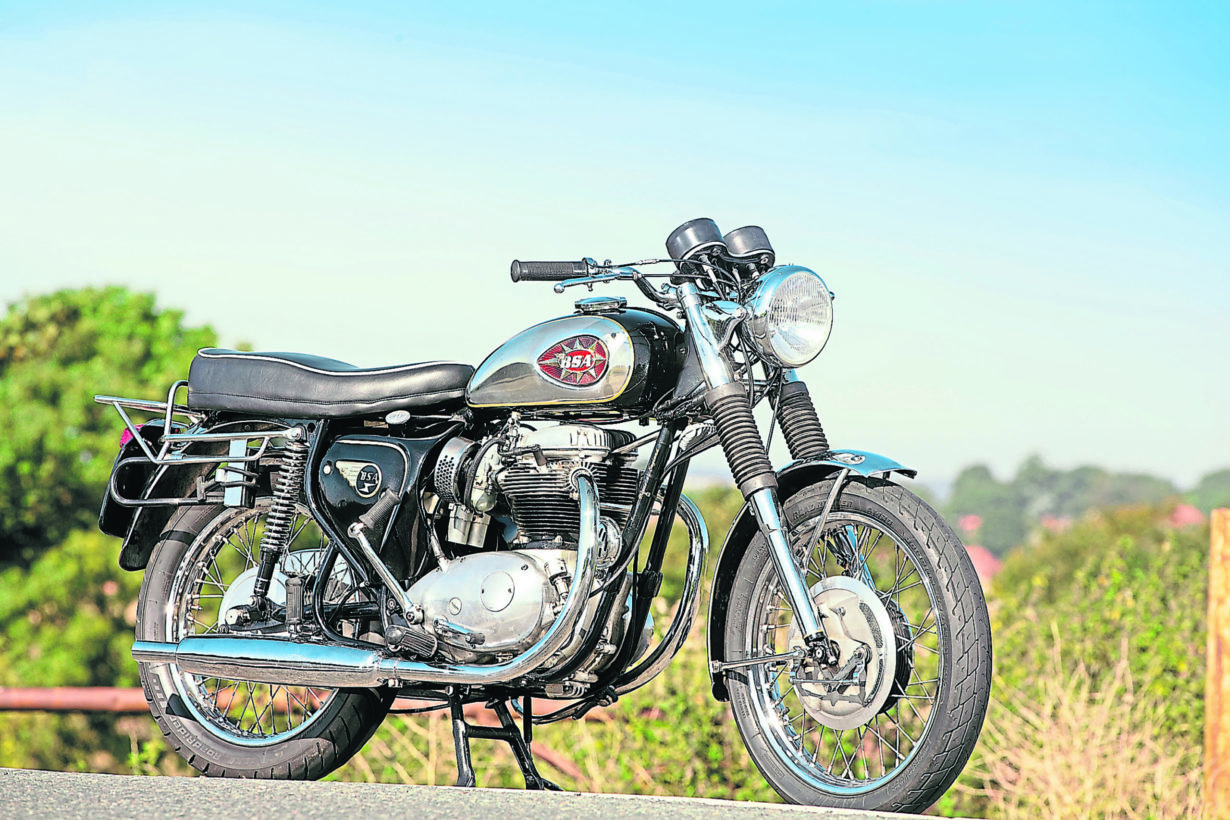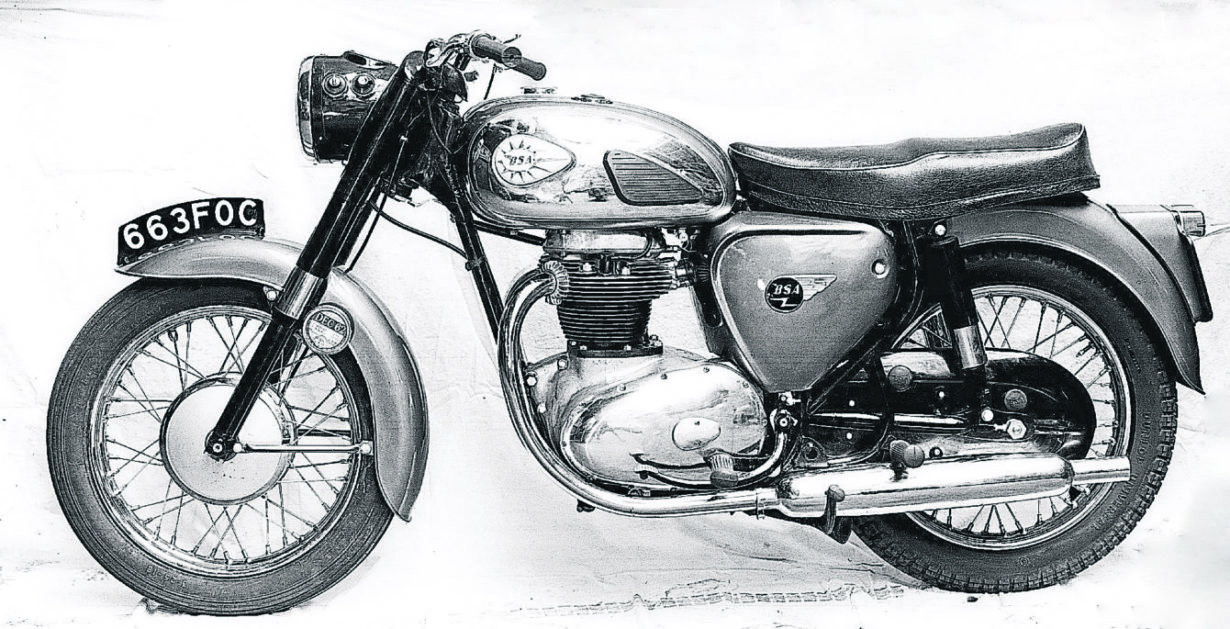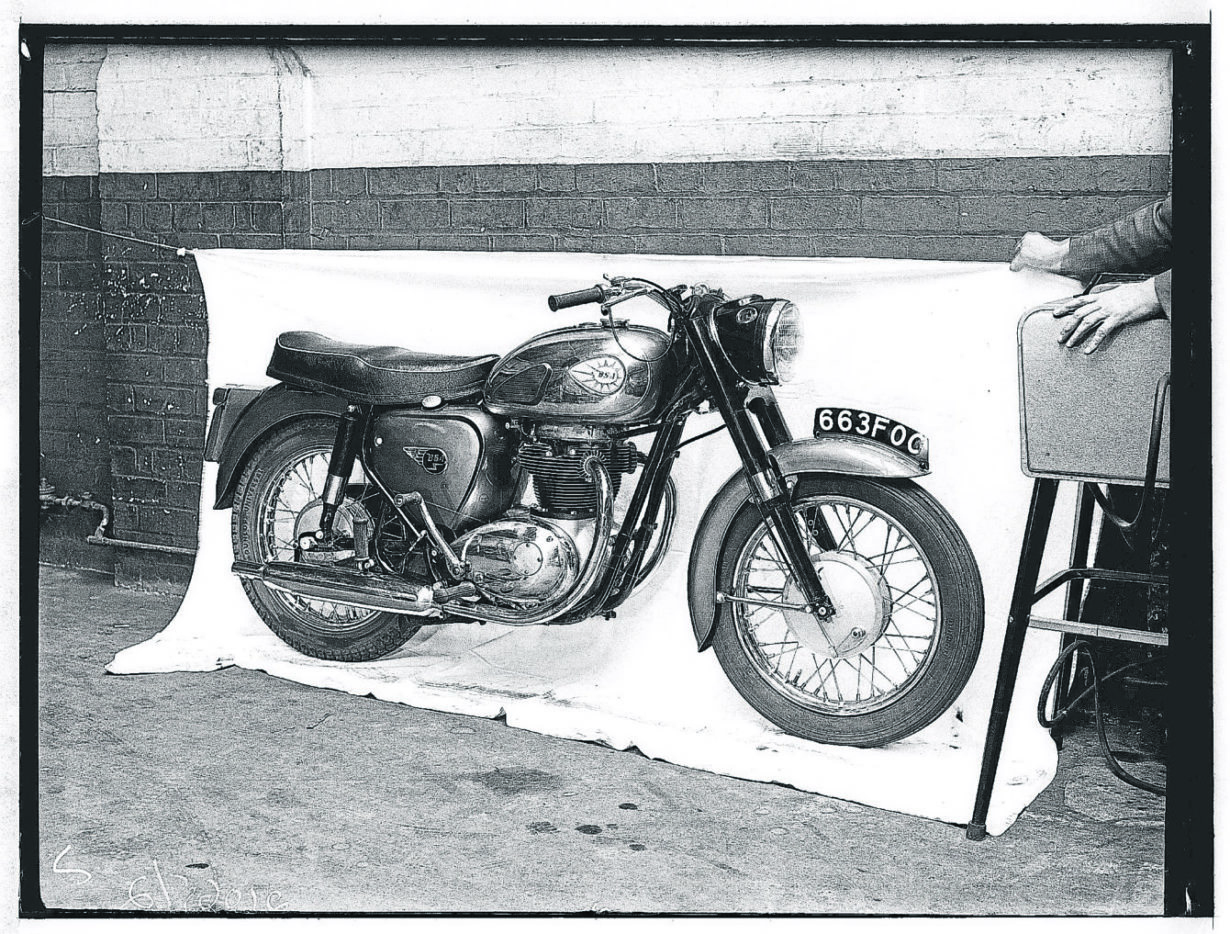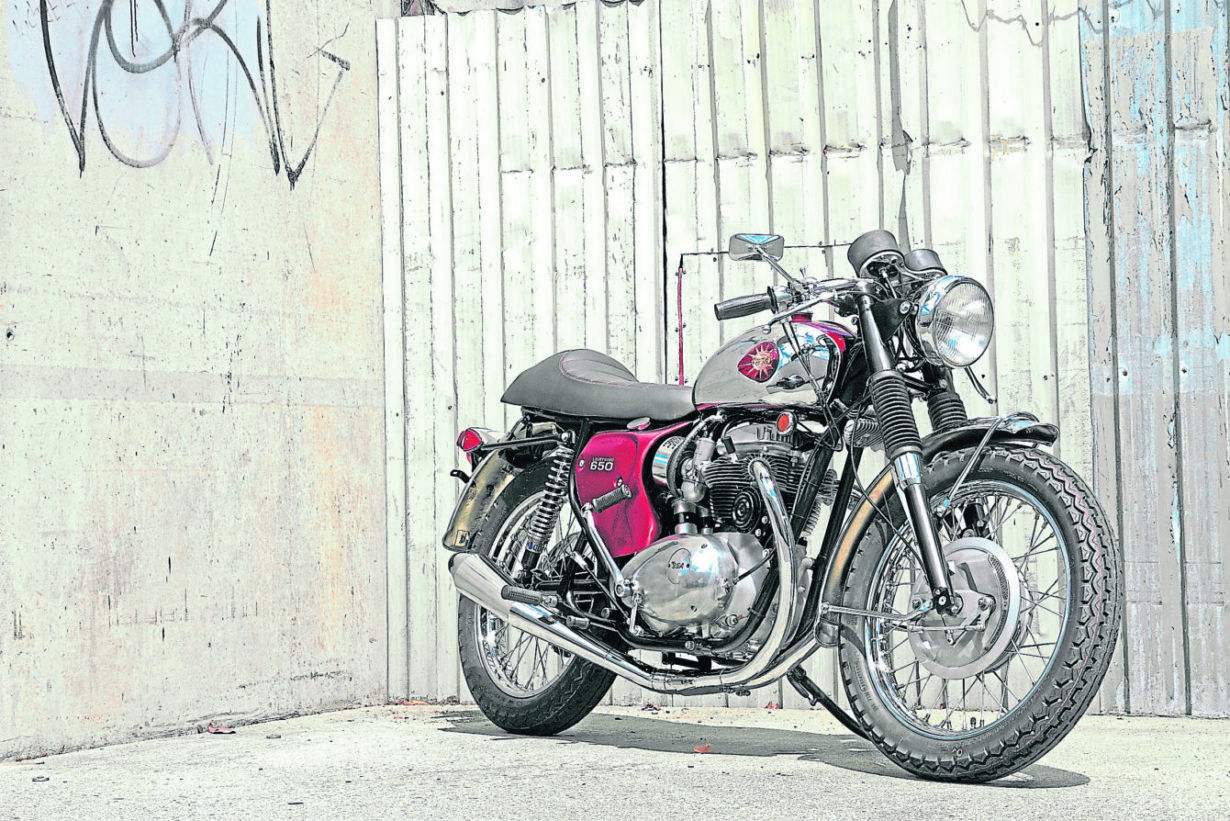Before most of us were born bikes had run separate gearboxes and engines. Yes, that sounds crazy now, but the arrangement was a carry-over from the veteran era. The set up was a pain to adjust as it involved faffing around with two chains – primary and drive. It was also costly to produce and assemble, but it would take the mighty BSA empire until 1962 before it made the move to what was termed ‘unit construction’. Rivals Triumph had moved its 350 and 500 twins to the unit set up in 57-59, but wouldn’t do the same to their 650s until after BSA in 1963. The new BSAs were pivotal to the firm yet there was customer resistance to the changes which many referred to as the ‘Power Egg’. Fast forward to 2022 and it’s allegedly the old-style Meriden Triumph twins that have the cachet… which is good for us with our five grand mythical budget!
The bike
The A65 models ran for 11 model years (1962-1972) with continuous, iterative, changes and a significant one in 1970 when the frame was totally redesigned along with an entirely new look with more angular panels. Over its lifespan the bike would be available with both single and twin carburettors which would be differentiated as Thunderbolt and Lightening versions, but there are numerous other models as well… not that our budget is going to stretch to some of them, unfortunately.

America was not only an important market to BSA, it was also crucial for the firm’s continued survival. With that in mind, various special versions of the A65 would be made over the years. Almost from the off the factory responded to pleas from its American importers to variously enliven, freshen up, modify, customise and upgrade its front-line machine. Many felt the big, unit construction, twin was simply ‘too safe’ in terms of looks and style and lacked the aesthetic edge of rivals Triumph. It took a lot of work to convince BSA’s notoriously conservative management to move with the ever-changing times but, gradually, the bike morphed from beyond the Plain Jane appearance – well, for America at least.
Whilst not being a totally comprehensive list, models included the Rocket, Thunderbolt, Thunderbolt Rocket, Lightning, Lightning Rocket, Lightning Clubman, Spitfire, Hornet, Spitfire Hornet and Firebird Scrambler. These variations on them covered pretty much every base at the time, including out-and-out racer on the road, sports variants, off-road machines for desert racing, street scramblers, tuned high-performance models with fibre-glass tank panels, and all supposedly aimed at capturing vital sales. And as if all of that wasn’t confusing enough, there was year-on-year revisions to most models as well as intra-model variations, upgrades and options. As an example, take the Spitfire – four different models (Mk I to Mk IV), racing-type carburettors, an option for a fairing, racing seat, extra-large fuel tank, small fuel tank, magneto ignition, points and coil ignition, revised brakes and probably a lot more. In effect, the most of the upgraded versions of the A65 remained forever ‘work in progress’.

By the late 1960s it was obvious that BSA and Triumph were no longer in tune with the market trends or their customers’ needs. This led to a pooling of resources on various areas that would ultimately see BSA go to the wall, leaving Triumph to carry the flag. However, before that an all-new chassis known as the OIF, or Oil In Frame, was launched in a bid to bolster sales.
Dispensing with the traditional oil tank, lubricant was stored in the frame and this led to the redesign of the A65’s running gear. The resultant machine was light years away from the old A65 in terms of looks and, arguably, all the better for it. The new boxy styling was enhanced by modern candy paintwork often counterpointed by solid colours to give a whole new look, but unfortunately it was all too little, too late, and by 1973 there were no more BSA motorcycles, leaving just Norton and Triumph to soldier on for a few more years.
Lineage and Legacy
Going from being the largest motorcycle manufacturer in the world to has-been happened so suddenly that it left a nasty taste in the public’s mouth and, for many years, jaundiced all the various models. However, BSA has always had a strong following and loyal supporters of the marque are passionate about the brand. Fifty years after the collapse of the firm the A65 is still well supported from a spares perspective with numerous companies making upgraded and revised parts.
Why you might want one now
There is really nothing quite like a big, gutsy, four-stroke parallel twin; as they say – if you know, you know! An instant drive off the throttle regardless of revs; an exhaust bark like nothing else; timeless good looks; decent build quality; and much more are all on offer with an A65. Ridden with its capabilities and not ragged like a Japanese multi, a BSA A65 will always put a smile on your face – they also handle rather well into the bargain. Even better, they’re cheaper than either a period Triumph or Norton and, to many fans, they have a subtly restrained style no other firm managed to copy. Beezers have charm and style all of their own.

Typical Prices
There are bargains and rip-offs out there with some traders asking seriously silly money for machines that have been over-restored. Ignoring the 11-grand-plus offerings, there’re a fair few on sale over and above our budget in the £6000-8000 region, but dig a little deeper and there’re some more affordable A65s for sale. Within our self-imposed limits you can either go for a very tidy 69/70 Lightning or a 71 Thunderbolt for just over £4000. At the time of writing, eBay had around 25 A65s listed, a lot being sold by dealers. We’d be inclined to look at one of the OIF models and make a cheeky offer on a six-grand bike.

Any BSA is likely to be significantly cheaper than its Triumph equivalent, simply because ill-informed pundits reckon the latter ‘is the one to have!’. Out on the road there’s really little difference in terms of performance comparing like with like. These BSA twins seem to have been constantly overlooked by the classic scene, but perhaps not for much longer. Stylish without being ostentatious, flexible and easy enough to work on and readily accessible, if you wanted a period British twin, the A65 makes an awful of of sense.

Faults and Foibles
1. IGNITION
The newest example is 50 years old! Alternators need to be set up properly for clearance.
2. PANEL & METAL WORK
Not too much to worry about in terms of quality but look out for broken panels.
Check seat bases for rot/corrosion.
3. ENGINE
Reliable if serviced and fed decent oil. Tales of main bearing failure are generally over-exaggerated.
4. CHASSIS
Solid and well-made but always worth checking for loose mounting bolts around the engine.
5. BRAKES
They are basic so don’t expect miracles from them. Fresh cables and shoes will maximise potential.
6. CARBS
Poorly fitting/worn slides will play merry hell with carburation.
7. HYBRIDS
Very easy to mix-n-match parts so get expert input if you’re unsure.
#morebikes #classicbike #classicmotorcycles #motorcycles #BSA


